#Chicago Syndicate
Photo


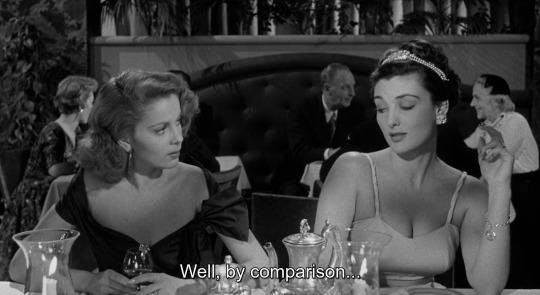
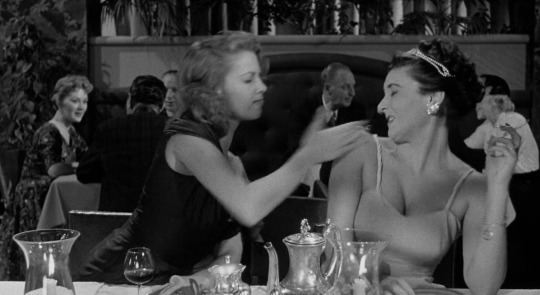


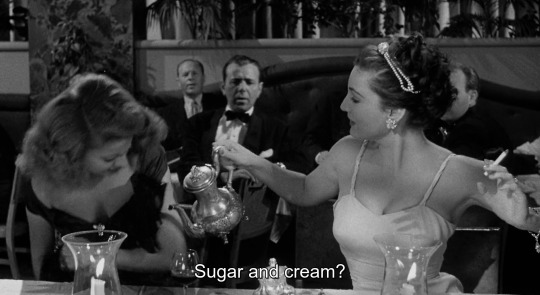
Chicago Syndicate | Fred F. Sears | 1955
Abbe Lane, Allison Hayes
221 notes
·
View notes
Text
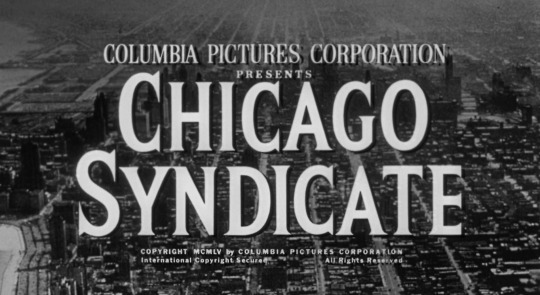
This morning's movie
1 note
·
View note
Text
For Christiano, With Hate #Blitz
Title: For Christiano, With Hate
Series: Chicago Syndicate #10
Author: Soraya Naomi
Genre: Dark Mafia Romance
Tropes: Arranged Marriage/Enemies to Lovers
Release Date: August 1, 2023
BLURB
Teagan’s world shatters when she uncovers the mafia ties of her friends Fallon and Luca. To ensure her silence, she’s thrust into an unwanted marriage with Christiano, the boss’ cousin—an enigmatic man who…

View On WordPress
1 note
·
View note
Text
youtube
True Crime | True Crime Podcasts on Youtube | True Crime Documentary In this episode of True Crime Legacy, I will talk about Frank McErlane Francis "Frank" McErlane was a Chicago gangster and second-in-command of the Saltis-McErlane Gang in the 1930s, working with Joseph Saltis in the Chicago Beer Wars. He was the one who introduced the Tommy Gun to Chicago, and was known to be a brutal hitman. McErlane was born in Chicago to an Irish-American Catholic family, with McErlane carrying a Rosary in his breast pocket. McErlane became the second-in-command to Joe Saltis, a Hungarian gangster who founded the Saltis-McErlane Gang with him, creating a powerful bootlegging empire. Frank was known to always be drinking alcohol, his face getting redder each drink. His image was that of a "butter and egg" man, and was very violent.
#Irish mafia#Tommy Gun#Thompson Sub Machine Gun#Peter Gusenberg#Al Capone#Johnny Torrio#Chicago Syndicate#Chicago Outfit#Youtube
1 note
·
View note
Text
It just struck me that there was a whole cluster of Assassin's Creed games that had a thing for organized crime. The Assassins seem to be really into gang violence? What the hell was that all about
#assassin's creed#it's not that serious tbh#but it did make me pause and go “whh?”#i grew up in chicago where gang violence is an actual problem#like there are certain parts of the city you shouldnt even drive through#so it just struck me like what a weird thing for Ubisoft to endorse#especially in Syndicate like no Jacob you cant fight evil gangs by making a good gang#thats not how that works#people are still living in terror either way
41 notes
·
View notes
Text
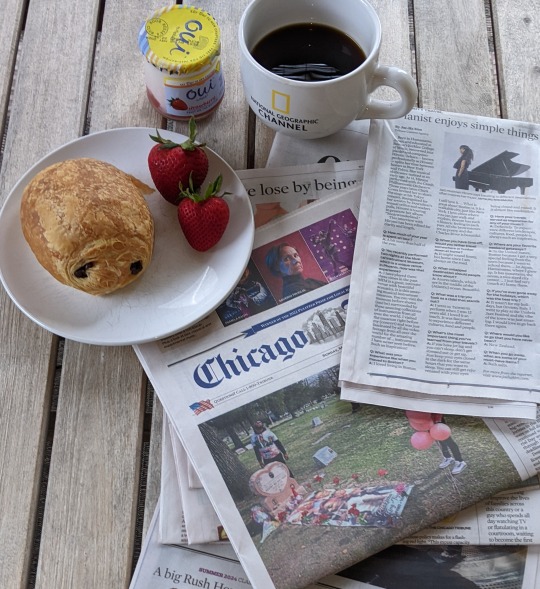
A morning run in the rain followed by a delicious breakfast of pain au chocolat, steaming hot coffee, fresh strawberries and French-style yogurt, while reading my article on Japanese American jazz pianist in the Chicago Tribune. Not a bad way to start the day.
2 notes
·
View notes
Text
Debunking the Myth: Chicago Outlaws MC and Chicago Mob Collaboration
#OUTLAWS #CHICAGOOUTLAWS #OUTLAWSMC
We delve the truth behind the rumored partnership between the Chicago Outlaws MC and the notorious Chicago Mob. Join us as we separate fact from fiction to reveal whether these two powerful entities are truly working together or if it’s all just a captivating myth. Discover the web of speculation in our quest to tell the real story behind this fantasy of…
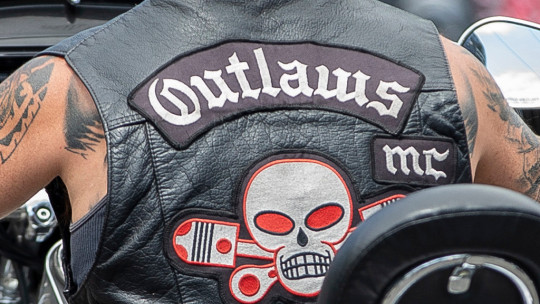
View On WordPress
#Biker News#Chicago Mob#Chicago Outlaws MC#Chicago Outlaws MC and Chicago Mob Collaboration#Collaboration Rumors#Crime Syndicates#Criminal Alliances#Criminal Underworld#Debunking Myth#Fact vs Fiction#insane throttle#Investigative Analysis#organized crime#Truth Uncovered#Unveiling Truth
0 notes
Text
BELLHEAD | Nothing As It Seems 2022 Tour
08/26 Sk8bar - St. Joseph, MO (w/ Hate Dept.)
08/27 Sinkhole - St. Louis, MO (w/ The Cult Sounds)
08/28 Lefty’s - Des Moines, IA (w/ Hate Dept.)
08/29 Hook and Ladder - Minneapolis, MN (w/ The Bellwether Syndicate)
08/30 X-Ray Arcade - Cudahy, WI (w/ The Bellwether Syndicate)
08/31 Empty Bottle - Chicago, IL (w/ The Bellwether Syndicate)
09/01 Crucible - Madison, WI (w/ The Bellwether Syndicate)
#BELLHEAD#Hate Dept#The Bellwether Syndicate#tour#rock music#goth music#industrial music#live music#chicago music#chicago band#post punk#alternative#indie music
1 note
·
View note
Photo
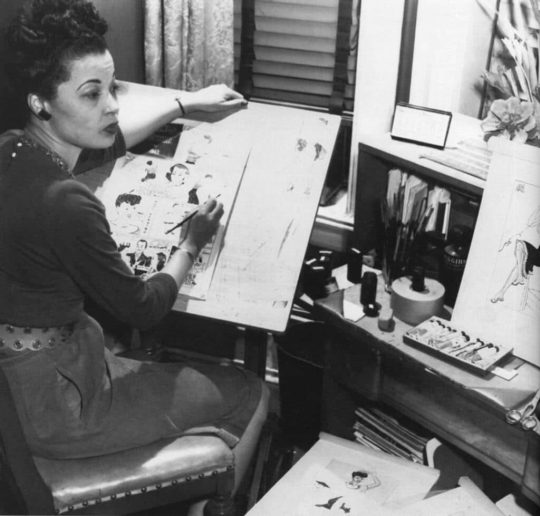

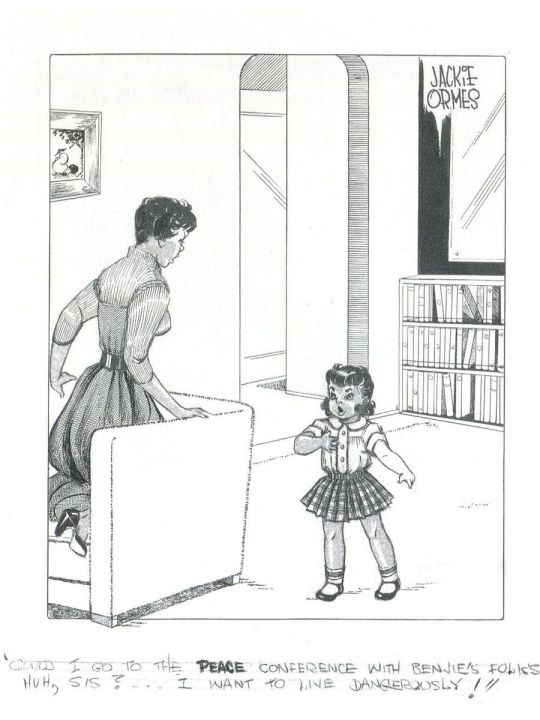
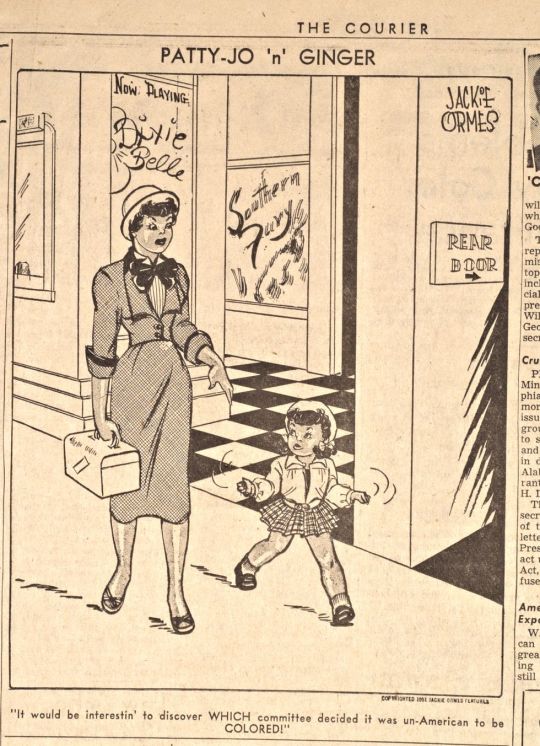

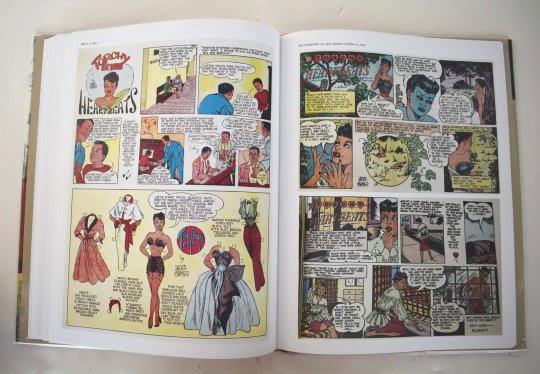
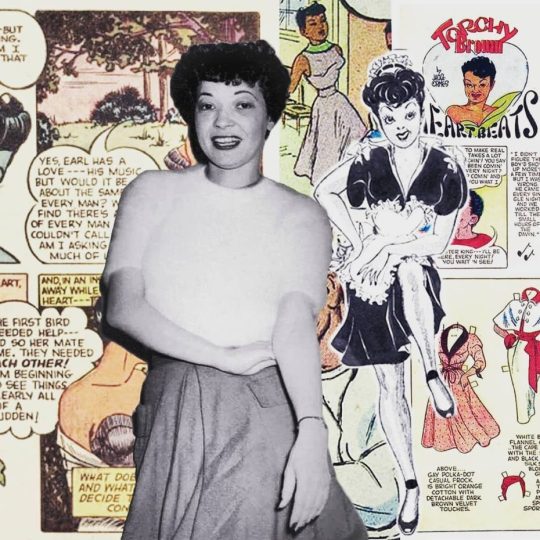
Jackie Ormes, the first Black American woman cartoonist
When the 14-year-old Black American boy Emmett Till was lynched in 1955, one cartoonist responded in a single-panel comic. It showed one Black girl telling another: "I don't want to seem touchy on the subject... but that new little white tea-kettle just whistled at me!"
It may not seem radical today, but penning such a political cartoon was a bold and brave statement for its time — especially for the artist who was behind it. This cartoon was drawn by Jackie Ormes, the first syndicated Black American woman cartoonist to be published in a newspaper. Ormes, who grew up in Pittsburgh, got her first break as cartoonist as a teenager. She started working for the Pittsburgh Courier as a sports reporter, then editor, then cartoonist who penned her first comic, Torchy Brown in Dixie to Harlem, in 1937. It followed a Mississippi teen who becomes a famous singer at the famed Harlem jazz club, The Cotton Club.
In 1942, Ormes moved to Chicago, where she drew her most popular cartoon, Patty-Jo 'n' Ginger, which followed two sisters who made sharp political commentary on Black American life.
In 1947, Ormes created the Patty-Jo doll, the first Black doll that wasn't a mammy doll or a Topsy-Turvy doll. In production for a decade, it was a role model for young black girls. "The doll was a fashionable, beautiful character," says Daniel Schulman, who curated one of the dolls into a recent Chicago exhibition. "It had an extraordinary presence and power — they're collected today and have important place in American doll-making in the U.S."
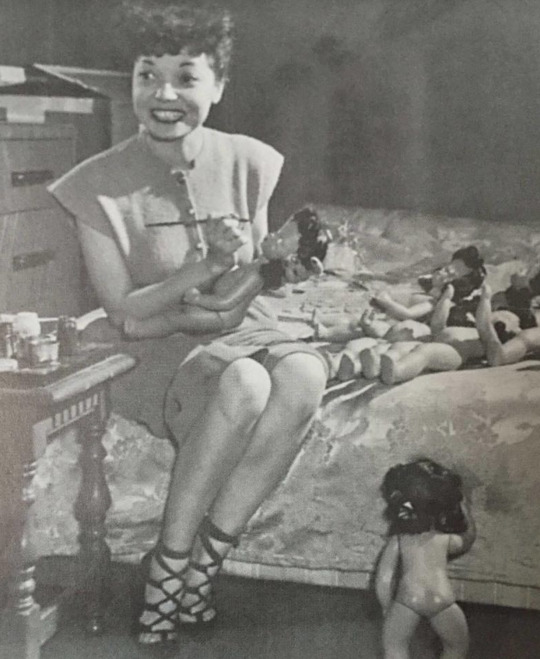

In 1950, Ormes drew her final strip, Torchy in Heartbeats, which followed an independent, stylish black woman on the quest for love — who commented on racism in the South. "Torchy was adventurous, we never saw that with an Black American female figure," says Beauchamp-Byrd. "And remember, this is the 1950s." Ormes was the first to portray black women as intellectual and socially-aware in a time when they were depicted in a derogatory way.
One common mistake that erased Ormes from history is mis-crediting Barbara Brandon-Croft as the first nationally syndicated Black American female cartoonist. "I'm just the first mainstream cartoonist, I'm not the first at all," says Brandon-Croft, who published her cartoons in the Detroit Free Press in the 1990s. "So much of Black history has been ignored, it's a reminder that Black history shouldn't just be celebrated in February."
Source
#jackie ormes#black american history#black history#black cartoonist#black comics#comics#barbara brandon croft#barbara brandon#black artists
3K notes
·
View notes
Text
The Addams Family Through the Years
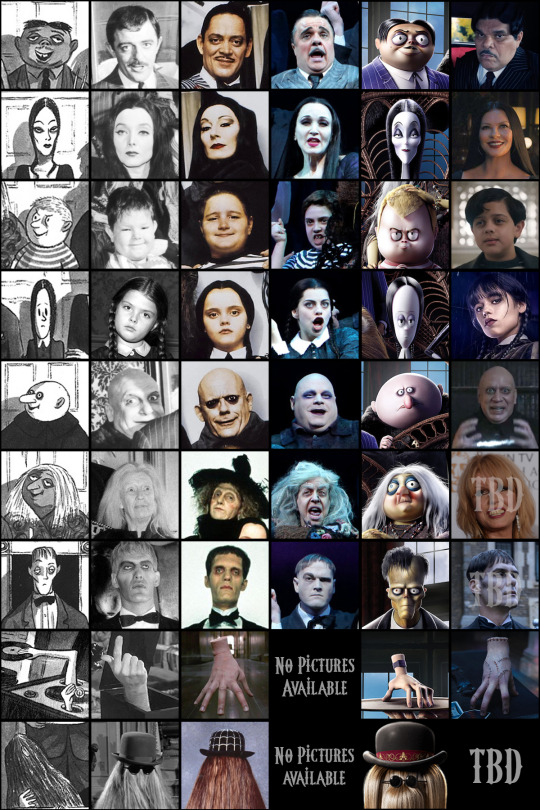
Before I get into character profiles, let me first do a run-through of the incarnations of the Addams family through the years.
As I wrote in my first post, Charles Addams created the nameless, bizarre family in some of the many comics he drew for The New Yorker starting in 1938. Morticia and Wednesday were named in 1962 when dolls of them were released. Charles Addams was asked for a list of names and descriptions for them and the other family members when the TV show was in development in 1963, but had little other involvement with the show.
The show ran for two seasons from 1964 to 1966, totalling 64 episodes. This was the same time that a similar show, The Munsters, was also on the air. Both shows were about wacky families of monstrous weirdos living in American suburbia. Both were in black and white, and both were canceled in 1966, possibly due to the rise of color television.
After a cross-over with Scooby-Doo, Hanna-Barbera produced a 16-episode animated series in 1973 which featured the family on a road trip in a creepy camper that looked like their mansion. It featured the same actors who played Lurch and Fester voicing their previous characters, and a 10-year-old Jodie Foster as the voice of Pugsley!
There was a reunion special in 1977, which reunited most of the cast of the show, called Halloween with the New Addams Family. The original show had remained popular, running in syndication for years. It was especially popular in Australia. According to one fan, this was because the Addams family was “less American” than the Munsters.
In 1991, a feature film was released after a tumultuous production. Raul Julia became the new face of Gomez Addams in the popular consciousness. It was followed by a sequel called Addams Family Values in 1993, and in between there was another animated series. John Astin reprised his role as Gomez in that animated series.
There were plans to continue the film series, but Raul Julia suffered from stomach cancer and died suddenly in 1994, canceling those plans. Although both films performed poorly at the box office, they gained a loyal following on home video and remain popular to this day. In 1992, an Addams family pinball machine was produced featuring original voice acting from Raul Julia as Gomez and Angelica Huston as Morticia. It became the most popular pinball machine of all time, selling over 20,000 units.
In 1998, a TV movie called Addams Family Reunion was produced by Saban, featuring Tim Curry as Gomez and Daryl Hannah as Morticia. The only returning actors from the 1991/93 movies were Carel Struycken and Christopher Hart's hand, who played Lurch and Thing, respectively. I have not seen it, and can not attest to its quality, or lack thereof. That movie was also meant to be the pilot for a TV show called The New Addams Family, but most of the cast was different. It ran for 65 episodes, none of which have I seen. (Hat tip to @tenthirtyone for pointing this out.)
After a try-out in Chicago, a musical debuted on Broadway in 2010. I was lucky enough to see that for my birthday that year. It starred Nathan Lane as Gomez and Bebe Neuwirth as Morticia. It was pretty entertaining. It would have been better if Lane wasn’t trying to be Raul Julia. He did a very fake Spanish accent, and it was terribly distracting. The musical was panned by critics and didn’t last long, but it was popular enough that it is now performed by high schools across the country. In fact, my friend Sarah and my cousin Charlie were both involved with different productions of it this past Spring.
That same year (2010), the rights were purchased by Illumination Entertainment, and they announced that they were going to produce a stop-motion film with Tim Burton. However, he decided to go with computer animation instead. That eventually turned into the 2019 film, after Tim Burton dropped out. This version was the closest in appearance to the original comics. Although the characters are rendered in 3D, the animators aimed to make them look as much like Charles Addams’ drawings as possible.
You’d think Tim Burton had been involved since at least the 1991 movie, but he hadn’t. Black and white stripes? Bats? Other goth things? That sounds like Tim Burton, but oddly enough, he actually hasn’t been attached to any Addams Family property until the Netflix show in 2022. It’s a natural pairing, and perhaps he would have been great friends with Charles Addams, had he been born several decades earlier.
Now the Netflix show, centered on Wednesday, is in production for its second season after its first season was one of the streaming service's most popular shows to date. It's not the first time the Addams family has spawned a viral dance sensation. Way back in the 1960s, the original TV show started a dance craze called “the Lurch”.
In coming posts, I’ll go into how Charles Addams originally portrayed each of the nine characters in the Addams family pictured above (Gomez, Morticia, Pugsley, Wednesday, Fester, Grandmama, Lurch, Thing, and Cousin Itt) and how they evolved, or didn’t, over time.
244 notes
·
View notes
Photo
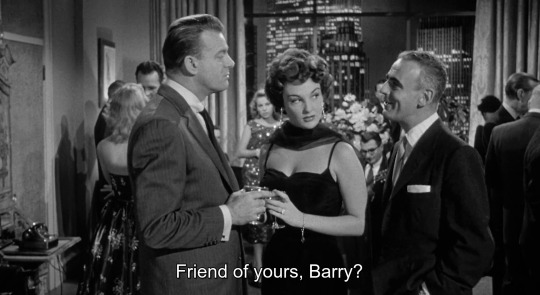
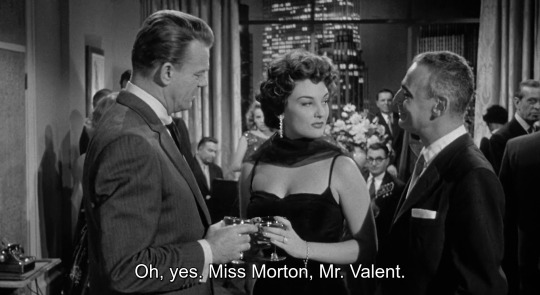





Chicago Syndicate | Fred F. Sears | 1955
Dennis O'Keefe, Allison Hayes, Paul Stewart, Abbe Lane
#Dennis O'Keefe#Allison Hayes#Paul Stewart#Abbe Lane#Fred F. Sears#Chicago Syndicate#1955#Noirvember
36 notes
·
View notes
Text
the structure of Chicago Syndicate is so 50s scifi B it's nearly jarring.
#The presentation of it. the narrator. I'm expecting saucers to show up.#Danny watches Chicago Syndicate
1 note
·
View note
Text


Day 3: 70s/Soul train
Soul Train, one of the longest-running syndicated shows in television history, began in 1970 on the Chicago television station WCIU-TV when there were few outlets for popular Black culture throughout the United States. It was a radical move for the time, exhibiting the cultural perspectives of African American music, dance, and fashion clothing on television. Soul Train allowed the world to view African Americans’ many faces and elements and their unique experiences in American society. Each episode of Soul Train would be closed with founder Don Cornelius reciting the words, “Love, peace, and soul!”
Link
125 notes
·
View notes
Text

"As black America approaches the 21st century, our capacity or our failure to build a solid bridge . . . of works will determine whether millions of young blacks already with us or yet unborn will cross over into the new century, or fall into the abyss."
Another name you almost certainly didn't know: M. (Moses) Carl Holman, civil rights activist, writer, and poet. Born in 1919 St. Louis, Holman showed an early gift for writing, and at the age of 19 won a scriptwriting award from a popular syndicated radio program. He graduated magna cum laude from Lincoln University and went on to acquire Master's degrees from the University of Chicago and from Yale. While at Yale he published his first collection of poems, and began regularly writing articles for various newspapers and magazines on income inequity, urban poverty, literacy, and other issues important to Black Americans. In 1962 he taught English at Clark College in Atlanta, giving him a front-row seat to key events in the earliest days of the civil rights movement. As some of his students participated in sit-ins and the Freedom Rides, he found himself appointed to the U.S. Commission on Civil Rights, of which he eventually became deputy director in 1966.
In 1968 Ebony magazine named Holman as one of the 100 Most Influential Black Americans. That same year Holman published what is probably his best-known work: The Baptizin', a play which won first prize in the National Community Theater Festival. In addition to multiple collections of poems, Holman also published a definitive overview of the civil rights movement in the U.S., from 1965 to 1975.
Perhaps most significantly, in 1971 Holman was named Vice President of the National Urban Coalition. This organization had re-formed in 1967 in the wake of the so-called "long, hot summer" of racial strife and injustices. During this time Holman's singular talent for delivering quiet and polite, but still powerful, speeches came to the fore and he jumpstarted a great many local housing, education, job training, and economic development programs aimed at disadvantaged Black and Hispanic communities.
In his later years Holman forcefully addressed the issue of "dual literacy" for Black children --emphasizing that such students not only needed to be well-versed not only in the fundamentals such as reading, writing, and public speaking; but also in math, science, and technology. His 1988 obituary notes that Holman "had an uncanny ability to form a coalition out of the most diverse elements, and it was often said that the key to his ability to do this was the fact that he never appeared to have an agenda for himself."
(Teachers: Need some resources to engage your students this Black History Month? I'll send you a pile of these trading cards, no cost, no obligation. Just give me a mailing address and let me know how many students in your class. No strings attached, no censorship, no secret-relaying-of-names to Abbott or DeSantis or HuckaSanders.)
#blm#black lives matter#m carl holman#black history month#black excellence#national urban league#teachtruth#dothework#showup
117 notes
·
View notes
Text
Poll time!
I wanna go back to my Cthulhu Mythos project, PSI. I have a short story collection I've been procrastinating on set in that universe. Wanna help me decide which to write next?
All of these are set in the 1920s and early 1930s, in America, ranging from Alabama to Chicago to Arkham, Mass. These are cosmic horror stories, so be prepared for dread without jumpscares and slow, dawning horror. I will likely put A Meeting at the Sow's Ear in this collection too, with some editing
Please reblog!
56 notes
·
View notes
